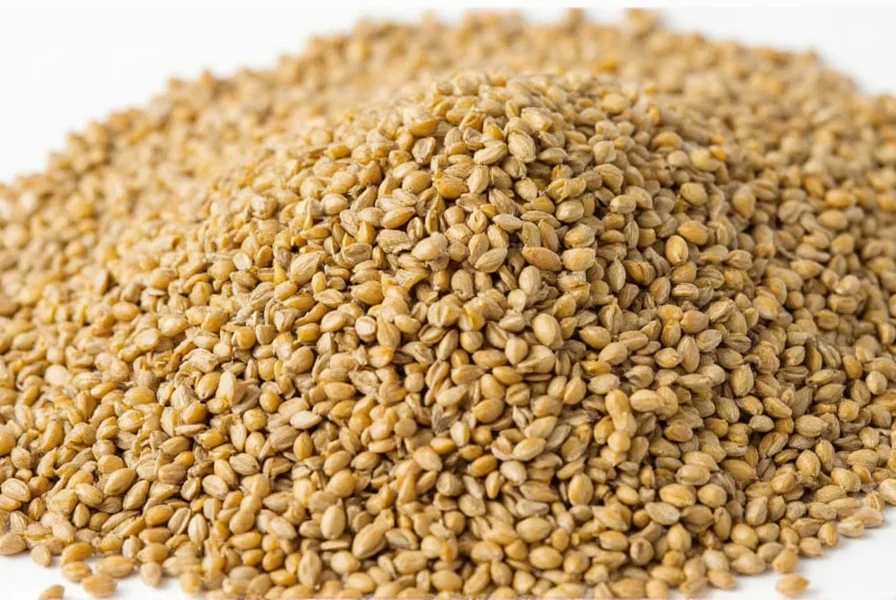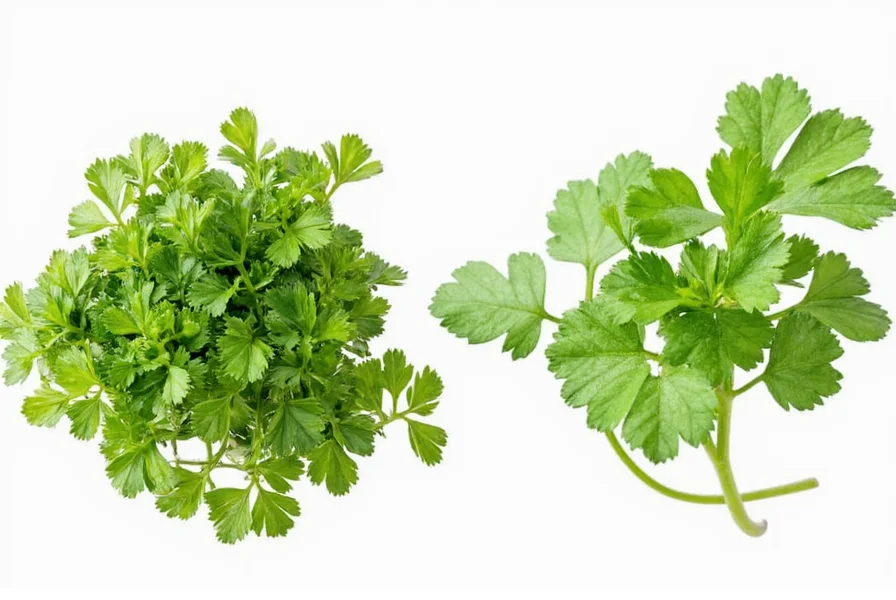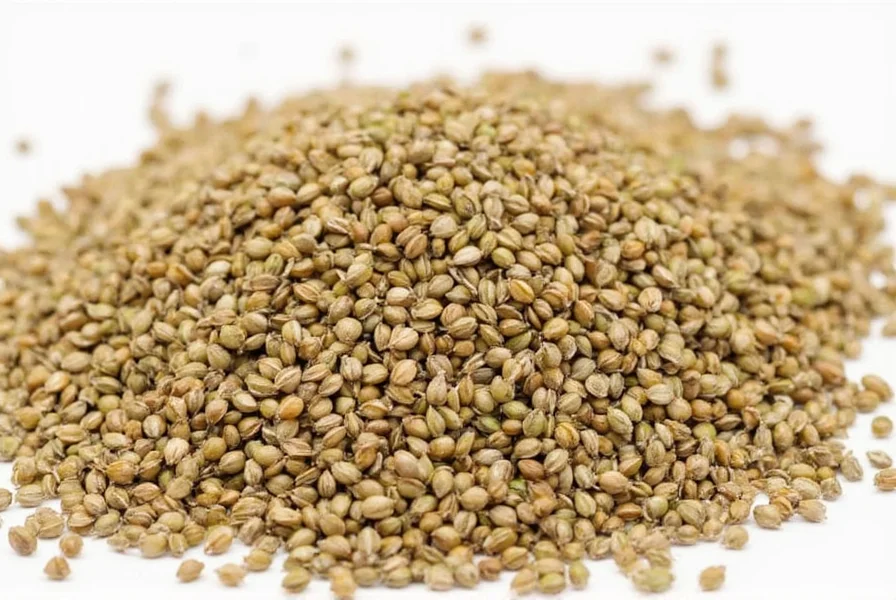Coriander seeds are the dried fruits of the Coriandrum sativum plant, harvested before full ripening and used globally as a spice. They're round, beige to light brown, with a citrusy, slightly sweet flavor that transforms when toasted. Contrary to common confusion, coriander seeds come from the same plant as cilantro (the leaves), but offer distinct culinary and health properties. These seeds contain essential oils like linalool, dietary fiber, and minerals including iron and magnesium, making them valuable in both traditional medicine and modern cooking applications.
Understanding coriander seeds benefits begins with recognizing their botanical identity. While many confuse coriander seeds with cilantro, they're actually different parts of the same plant. The seeds develop after the cilantro flowers bloom and mature, typically harvested when they turn from green to beige. This transformation creates a completely different flavor profile—where cilantro leaves offer a bright, citrusy note, coriander seeds provide warm, nutty undertones with subtle citrus hints.
When exploring how to use coriander seeds in cooking, professional chefs recommend toasting them first to unlock their full aromatic potential. The heat activates volatile compounds, particularly linalool, which comprises 60-70% of the essential oil content. This process transforms their flavor from mild and floral to rich and complex, making them indispensable in spice blends like garam masala, curry powders, and pickling mixes.
Botanical Profile and Harvesting Process
Coriandrum sativum, commonly known as coriander or cilantro depending on the plant part used, belongs to the Apiaceae family. The seeds form in small, spherical clusters after the plant flowers. Harvesting occurs when seeds reach maturity but before they fully dry on the plant, typically 3-4 months after planting. Farmers cut the entire plant and hang it upside down in a dry, ventilated space, allowing seeds to naturally detach as they dry.
Nutritional Composition of Coriander Seeds
| Nutrient | Amount per 100g | Key Benefits |
|---|---|---|
| Dietary Fiber | 41.9g | Supports digestive health and regularity |
| Iron | 17.4mg | Essential for oxygen transport in blood |
| Magnesium | 336mg | Supports muscle and nerve function |
| Calcium | 709mg | Contributes to bone health |
| Linalool | 60-70% of essential oil | Anti-inflammatory and calming properties |
Health Benefits Supported by Research
Scientific studies reveal compelling health benefits of coriander seeds that extend beyond traditional uses. Research published in the Journal of Ethnopharmacology demonstrates their significant antioxidant capacity, with ORAC values measuring 24,700 μmol TE/100g. This antioxidant activity helps combat oxidative stress, potentially reducing the risk of chronic diseases.
One of the most documented coriander seeds for digestion benefits involves their carminative properties. Clinical trials show that coriander seed extract can reduce symptoms of irritable bowel syndrome by relaxing gastrointestinal muscles and reducing spasms. The high fiber content also promotes healthy gut microbiota, supporting overall digestive wellness.
Emerging research suggests potential cardiovascular benefits as well. A 2022 study in Phytotherapy Research found that regular consumption of coriander seeds may help maintain healthy cholesterol levels. The seeds' combination of dietary fiber, plant sterols, and antioxidant compounds appears to support healthy lipid metabolism.

Culinary Applications Across Global Cuisines
Understanding coriander seed spice uses requires exploring their role in various culinary traditions. In Indian cuisine, they form the backbone of many curry blends, often combined with cumin, turmeric, and fenugreek. Middle Eastern recipes frequently use them in za'atar blends and meat rubs, while European traditions incorporate them into sauerkraut, pickles, and breads.
Professional chefs emphasize the importance of proper preparation when working with ground coriander vs whole coriander seeds. Whole seeds maintain their flavor profile for up to a year when stored properly, while pre-ground coriander loses potency within months. For maximum flavor impact, toast whole seeds in a dry skillet over medium heat for 2-3 minutes until fragrant, then grind immediately before use.
Storage Methods for Maximum Freshness
The best way to store coriander seeds involves protecting them from three enemies: light, heat, and moisture. Store whole seeds in an airtight container in a cool, dark cupboard for up to one year. For extended storage, keep them in the refrigerator or freezer, where they'll maintain optimal flavor for 18-24 months. Avoid storing near heat sources like stoves or ovens, as temperature fluctuations accelerate flavor degradation.
When evaluating seed quality, look for uniform beige color without dark spots, which indicate age or improper drying. Fresh seeds should feel hard and make a crisp sound when bitten. Properly stored seeds will retain their characteristic citrusy aroma, while stale seeds develop a musty smell and lose their flavor complexity.
Coriander Seeds vs Cilantro: Clarifying the Confusion
The coriander seeds vs cilantro difference creates frequent confusion, especially in different regions. In the United States, "cilantro" refers to the leaves and stems of Coriandrum sativum, while "coriander" denotes the seeds. In the UK and many Commonwealth countries, "coriander" refers to both the plant and seeds, with no specific term for the leaves alone.
Flavor-wise, the distinction is significant. Cilantro leaves offer a bright, citrusy, sometimes soapy flavor (for those with the OR6A2 gene), while coriander seeds provide warm, nutty, slightly citrus notes that deepen when toasted. Culinary applications differ accordingly—cilantro typically garnishes finished dishes, while coriander seeds form foundational flavors in cooked preparations.

Safety Considerations and Potential Interactions
While generally recognized as safe, some individuals should exercise caution with coriander seeds. People with known allergies to plants in the Apiaceae family (including parsley, carrots, and celery) may experience cross-reactivity. The seeds contain coumarin compounds, which in large quantities might interact with blood-thinning medications.
Traditional medicine systems have used coriander seeds for centuries, but modern research suggests moderation is key. Consuming more than 6 grams daily of coriander seed extract may cause photosensitivity in some individuals. As with any dietary change, consult with a healthcare provider if you have specific health conditions or take prescription medications.
Practical Tips for Home Cooking
When incorporating coriander seeds into your cooking, consider these professional techniques. For soups and stews, add whole seeds early in the cooking process to allow flavors to infuse gradually. In dry rubs or spice blends, toast and grind seeds just before use for maximum aroma. When making homemade curry powder, combine coriander seeds with cumin and mustard seeds at a 3:1:1 ratio for balanced flavor.
For those exploring how to use coriander seeds in baking, they pair beautifully with citrus zest, cardamom, and ginger in sweet applications. Try adding 1 teaspoon of freshly ground coriander to apple pie filling or citrus-based cakes for a sophisticated flavor dimension that complements rather than overwhelms.
Frequently Asked Questions
What's the difference between coriander seeds and cilantro?
Coriander seeds and cilantro come from the same plant (Coriandrum sativum) but are different parts. Cilantro refers to the fresh leaves and stems, while coriander seeds are the dried fruit of the plant. They have completely different flavor profiles—cilantro is bright and citrusy (sometimes soapy to some people), while coriander seeds are warm, nutty, and subtly citrusy, especially when toasted.
How should I store coriander seeds for maximum freshness?
Store whole coriander seeds in an airtight container in a cool, dark place away from heat sources. Properly stored, they'll maintain optimal flavor for 12 months. For extended freshness (18-24 months), keep them in the refrigerator or freezer. Avoid pre-ground coriander as it loses potency quickly—grind seeds just before use for the best flavor and aroma.
What are the primary health benefits of coriander seeds?
Coriander seeds offer several evidence-backed health benefits including supporting digestive health through carminative properties, providing antioxidant protection with an ORAC value of 24,700 μmol TE/100g, and potentially helping maintain healthy cholesterol levels. They're rich in dietary fiber (41.9g per 100g), iron, and magnesium, and contain linalool which has anti-inflammatory properties.
Can I substitute ground coriander for whole coriander seeds?
Yes, but with flavor considerations. As a general rule, 1 teaspoon of whole coriander seeds equals about ¾ teaspoon of ground coriander. However, whole seeds toasted and freshly ground provide significantly more vibrant flavor than pre-ground spice. For best results in recipes calling for whole seeds, toast them first to enhance their natural oils before grinding.
Are there any safety concerns with consuming coriander seeds?
Coriander seeds are generally safe when consumed in culinary amounts. People with allergies to plants in the Apiaceae family (carrots, celery, parsley) may experience cross-reactivity. Those taking blood-thinning medications should consult their doctor as coriander contains coumarin compounds. Consuming more than 6 grams daily of concentrated coriander seed extract may cause photosensitivity in some individuals.











 浙公网安备
33010002000092号
浙公网安备
33010002000092号 浙B2-20120091-4
浙B2-20120091-4